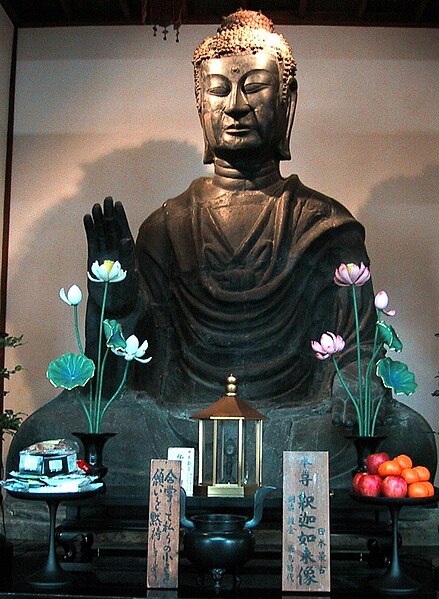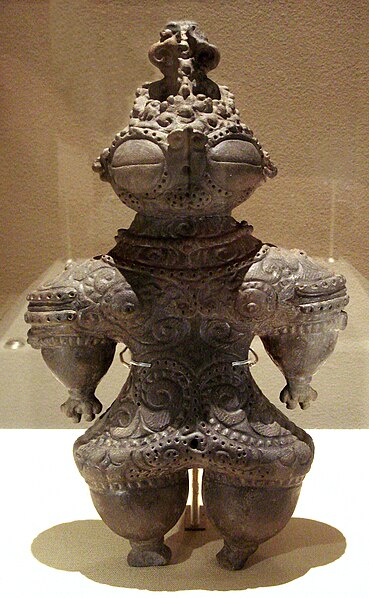The Asuka period was a period in the history of Japan lasting from 538 to 710, although its beginning could be said to overlap with the preceding Kofun period. The Yamato polity evolved greatly during the Asuka period, which is named after the Asuka region, about 25 km (16 mi) south of the modern city of Nara.
The Daibutsu at the Asuka-dera in Asuka, the oldest known statue of the Buddha in Japan with an exact known date of manufacture, 609 AD; the statue was made by Kuratsukuri-no-Tori, son of a Korean immigrant.
A stone foundation section of the Mount Shioji Ōnojō Castle Ruins, where construction began in 665
A wall mural depicting ladies, from the west wall of the Takamatsuzuka Tomb, late 7th century, Asuka period
A dragon-head pitcher with Pegasus pattern incised, gilded bronze with silver, Asuka period, 7th century, former Horyu-ji Temple treasures, Tokyo National Museum
The first human inhabitants of the Japanese archipelago have been traced to the Paleolithic, around 38–39,000 years ago. The Jōmon period, named after its cord-marked pottery, was followed by the Yayoi period in the first millennium BC when new inventions were introduced from Asia. During this period, the first known written reference to Japan was recorded in the Chinese Book of Han in the first century AD.
Reconstruction of a Jōmon family from the Sannai-Maruyama Site
A vase from the early Jōmon period (11000–7000 BC)
Middle Jōmon vase (2000 BC)
Dogū figurine of the late Jōmon period (1000–400 BC)








